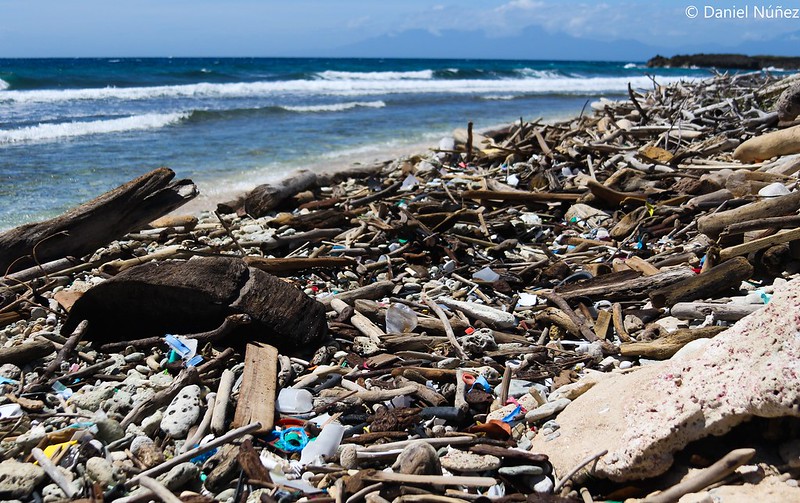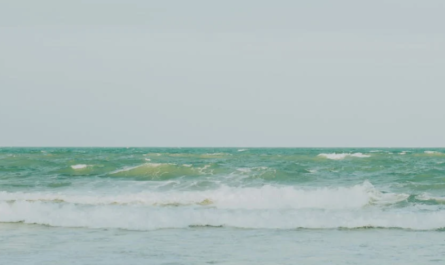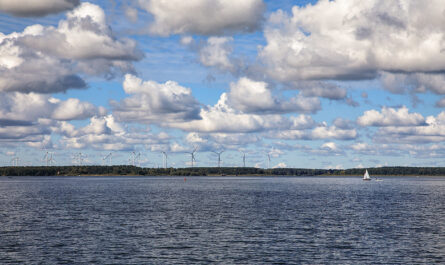Plastic pollution has emerged as one of the most pressing environmental challenges of our time, with devastating effects on marine ecosystems, wildlife, and human health. The Atlantic Ocean, covering over 106 million square kilometers and hosting a diverse array of ecosystems, is no exception. Each year, millions of tons of plastic waste make their way into the Atlantic, endangering its fragile ecosystems and the livelihoods of millions who depend on its resources.
This article explores the sources and impact of plastic pollution in the Atlantic, highlights global efforts to address this crisis, and delves into innovative solutions ranging from grassroots coastal cleanups to cutting-edge technologies.
Understanding Plastic Pollution in the Atlantic
1. Sources of Plastic Pollution
Plastic pollution in the Atlantic comes from a variety of sources, including:
- Land-Based Sources: These account for up to 80% of ocean plastic, originating from:
- Urban runoff
- Improper waste disposal
- Rivers acting as conduits for inland waste
- Maritime Activities: Fishing gear, shipping waste, and oil rig operations contribute significantly.
- Atmospheric Inputs: Recent studies show that microplastics can travel through the atmosphere and settle in ocean waters.
2. Types of Plastics
- Macroplastics: Large debris such as fishing nets, bottles, and packaging.
- Microplastics: Tiny fragments smaller than 5mm, often originating from cosmetics, synthetic clothing, and the breakdown of larger plastics.
- Nanoplastics: Even smaller particles with significant potential to penetrate biological systems.
3. Plastic Accumulation Zones
The Atlantic Garbage Patch, a zone of accumulated plastic debris, stretches between North America and Europe. Although smaller than its Pacific counterpart, it represents a significant environmental challenge.
Impact of Plastic Pollution on the Atlantic Ecosystem
1. Marine Wildlife
Plastic pollution poses a direct threat to marine species:
- Ingestion: Animals like sea turtles and seabirds mistake plastic for food, leading to malnutrition and internal injuries.
- Entanglement: Marine life, including whales and fish, often becomes entangled in discarded fishing nets, leading to injuries or death.
- Toxicity: Plastics release harmful chemicals as they degrade, affecting marine organisms at every level of the food chain.
2. Coral Reefs
Plastics can smother coral reefs, blocking sunlight and introducing pathogens that lead to coral diseases, further threatening these biodiversity hotspots.
3. Human Impact
- Health Risks: Microplastics have been found in seafood, drinking water, and even the air we breathe, posing potential health risks.
- Economic Costs: The fishing, tourism, and shipping industries face financial losses due to the impacts of plastic pollution.
Global Efforts to Combat Plastic Pollution
1. International Agreements
- The UN Clean Seas Campaign: Launched in 2017, this initiative aims to significantly reduce marine plastic pollution by engaging governments, businesses, and citizens.
- The Basel Convention: Addresses the transboundary movement of hazardous wastes, including plastics, to prevent their disposal in the ocean.
- Global Plastic Treaty: Under negotiation, this treaty seeks to establish legally binding measures to curb plastic pollution worldwide.
2. Regional Initiatives
- Atlantic Regional Action Plan: Coastal nations in the Atlantic basin collaborate to address shared challenges of plastic pollution.
- European Union Directive on Single-Use Plastics: Bans certain single-use plastic items and encourages recycling and alternative materials.
3. Grassroots Movements
- Coastal Cleanups: Organizations like Ocean Conservancy mobilize millions of volunteers annually for global beach cleanups, removing tons of plastic waste.
- Local Activism: Community groups across Atlantic-facing nations drive awareness and advocacy efforts, often leading to policy changes.
Innovative Technology Solutions
1. Ocean Cleanup Systems
- The Ocean Cleanup Project: Utilizes large floating barriers to capture and remove plastic from ocean gyres, including the Atlantic Garbage Patch.
- Seabin Technology: Floating trash collectors installed in marinas and harbors capture plastics before they reach the open ocean.
2. Biodegradable Alternatives
- Bioplastics: Made from renewable resources like cornstarch or algae, these materials break down more easily in marine environments.
- Edible Packaging: Startups are developing packaging materials that can be safely consumed or composted.
3. Advanced Recycling Techniques
- Chemical Recycling: Breaks plastics down into their molecular components, enabling their reuse in high-quality products.
- Closed-Loop Systems: Encourages industries to take responsibility for their plastic waste by incorporating it back into production cycles.
4. Tracking and Monitoring
- AI and Satellite Imaging: Advanced technologies monitor plastic accumulation and track waste sources, improving cleanup efficiency.
- Smart Sensors: Devices deployed in waterways provide real-time data on plastic pollution levels.
Community and Corporate Contributions
1. Empowering Communities
- Education and Awareness: Programs in schools and communities foster an understanding of plastic pollution’s impact.
- Eco-Innovation Hubs: Local centers promote sustainable practices and support the development of eco-friendly products.
2. Corporate Responsibility
- Extended Producer Responsibility (EPR): Companies are held accountable for the lifecycle of their plastic products, encouraging sustainable design and waste management.
- Partnerships: Businesses collaborate with environmental organizations to fund cleanups and innovation.
Success Stories
1. Bermuda Alliance for the Sargasso Sea
This organization has successfully implemented measures to protect the Sargasso Sea from plastic pollution, demonstrating the potential of regional partnerships.
2. Parley for the Oceans
Working in the Caribbean, this initiative turns ocean plastic into materials for high-end consumer products, merging environmentalism with economic opportunity.
3. Plastic Bank
In countries like Haiti, Plastic Bank incentivizes waste collection by exchanging plastic for money, goods, or services, creating a circular economy.
Challenges in Combating Plastic Pollution
1. Global Coordination
Disparities in economic resources and infrastructure hinder the ability of some nations to implement effective plastic management systems.
2. Waste Management Gaps
Many coastal nations lack the necessary waste management infrastructure, leading to uncontrolled plastic leakage into the ocean.
3. Consumer Behavior
The convenience of single-use plastics remains a significant barrier to reducing plastic waste at its source.
The Path Forward
1. Reducing Plastic Production
- Policy Interventions: Governments must enforce regulations to limit the production of non-essential single-use plastics.
- Promoting Alternatives: Incentives for biodegradable materials and refillable packaging systems can drive change.
2. Enhancing Waste Management
- Infrastructure Investment: Expanding access to recycling and waste collection systems in developing regions is critical.
- Waste-to-Energy Innovations: Technologies that convert plastic waste into usable energy can provide dual benefits.
3. Strengthening Global Collaboration
- Data Sharing: Transparent data on plastic waste generation and management can improve global strategies.
- Funding Mechanisms: Developed nations can support developing countries through financial and technical assistance.
Conclusion
Plastic pollution in the Atlantic Ocean is a global issue that requires a unified response. While the challenges are immense, the combined efforts of governments, communities, corporations, and innovators offer hope for a cleaner, healthier Atlantic. By reducing plastic waste at its source, improving waste management systems, and embracing innovative technologies, we can turn the tide against plastic pollution and safeguard the Atlantic Ocean for future generations.
This article highlights the diverse efforts to combat plastic pollution in the Atlantic and underscores the importance of collective action. With continued commitment and innovation, a plastic-free ocean is within reach.



